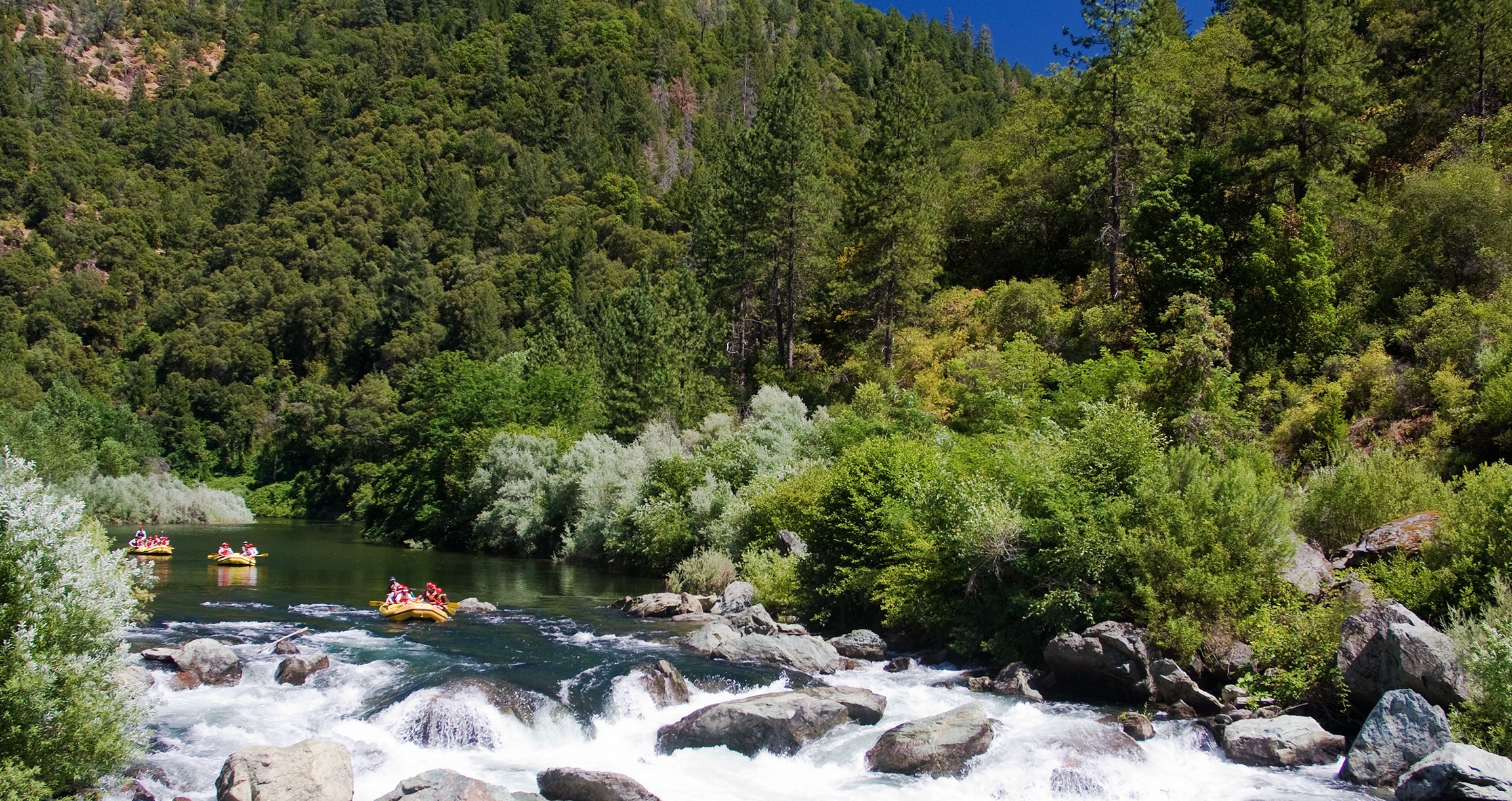American River History
Before the land known as California became famous for gold, it was home to the Nisenan Indians. The Nisenan lived in the foothills of the Sierra Nevada mountains, primarily in the Yuba, Bear, and American River watersheds. When gold was discovered, the Nisenan were pushed out of the area; many died of disease, and many more were murdered by greedy settlers. Today, signs of the Nisenan can be seen up and down the river banks, most notably as the worn-out grinding holes scattered in rocks along the river.

The Gold Rush
In 1848, gold was discovered on the South Fork of the American River, thus sparking one of the largest known human migrations to date. Settlers searched the banks of every creek, stream, and river in California, all in search of gold; as time went on, some of the most lucrative rivers were the Forks of the American.
By the fall of 1849, it’s estimated there were up to 10,000 men searching for gold on the Middle Fork of the American. Famous gold-yielding beaches included Maine Bar, Spanish Bar, Ford’s Bar, and Murderer’s Bar.
Early on, Hydraulic mining was often used to get at the gold in the river banks. Miners would use high-pressure hoses to divest the banks of soil and used mercury to collect the tiniest flakes of gold into one place. Hydraulic mining was banned in 1884, but the environmental effects linger today.
Over the course of the Gold Rush, California produced an estimated 750,000 pounds of gold, which would be worth $14.5 billion in 2014 dollars.
Tunnel Chute
As gold became more scarce, miners invented new ways to search the riverbanks for gold. In 1861, miners laid their eyes on a wide and slow-moving horseshoe bend in the Middle Fork of the American, believing that the gold would have settled to the streambed in this calm water. Miners tried various methods to access the streambed in the horseshoe bend, and in 1865, they began the monumental task of creating a tunnel through the granite mountainside – in fact, dynamite was only patented in 1867, meaning that much of the construction was done by hand or with inefficient (and dangerous) blasting tools.
When they finished in 1869, the dry horseshoe bend became one of the most lucrative gold sites in the history of the gold rush. As an added bonus, the famous Tunnel Chute rapid was created; this unique man-made rapid features a narrow chute and a steep drop of turbulent water which rushes through a tunnel and out the other side of the mountain. High water flows following the winter of 2016 resulted in a change to the Tunnel Chute rapid, increasing its difficulty from Class IV to Class V.
Folsom Dam & Auburn State Recreational Area
In the 1950s, Folsom Dam was built to provide flood control and water storage for Sacramento. Shortly after, officials put forward a plan for a companion dam in the gorges of the American River Canyon near Auburn; plans were approved in 1966 and construction started in 1967.
However, construction on the Auburn dam was halted in 1975 due to a 5.7 earthquake nearby in Oroville. Dams often increase the potential for an earthquake due to Reservoir Induced Seismicity, and further studies of the Proposed Auburn Dam indicated that the cost of safely building a dam in this location were too high to continue. While the Auburn Dam remains a Congressionally authorized project, construction has been halted until further notice.
Since the project was halted, the land which would have been flooded by the Auburn Dam has been converted into the Auburn State Recreational Area. The area is made of 38,000 acres along the North and Middle Forks of the American River, with over 100 miles of hiking, biking, and equestrian trails throughout the canyon. This area is host to a wide variety of recreational activities, including hiking, biking, horseback riding, whitewater rafting, camping, swimming, fishing, gold panning, and off-highway motorcycle riding.
In addition to providing ample recreational opportunities for over 900,000 visitors each year, the park is home to an abundance of wildlife. Habitats include foothill woodland, mixed conifer, and riparian. There is an abundance of wildflowers each spring, adding color to open grassy fields. There’s also a wide variety of animal species, ranging from the common Ground Squirrel to the elusive Mountain Lion or Black Bear.

